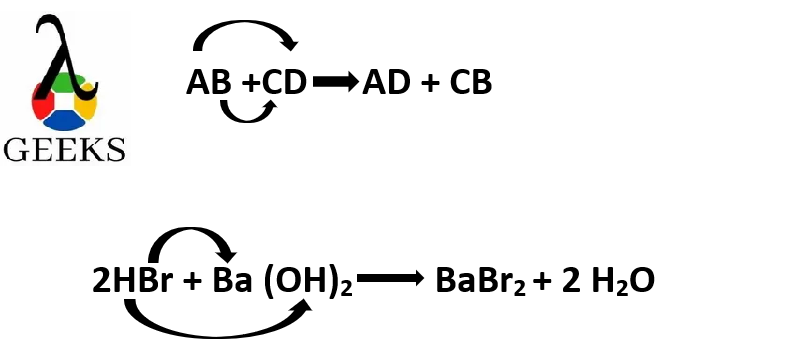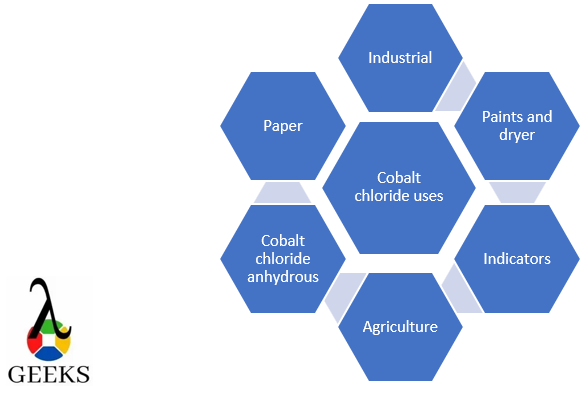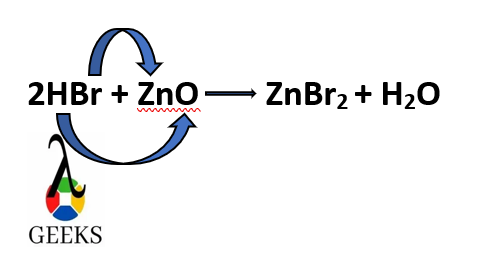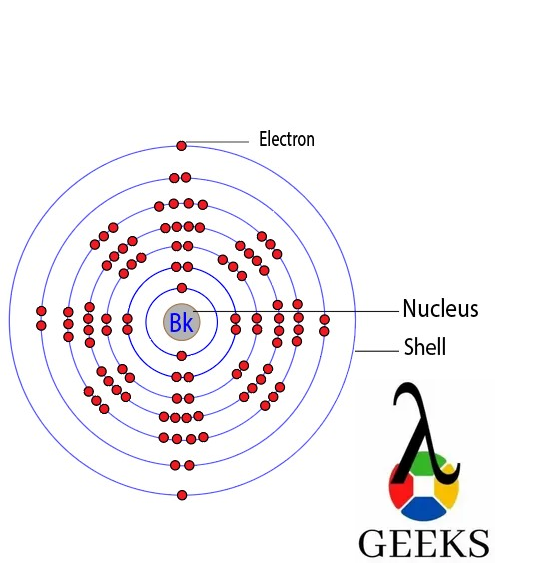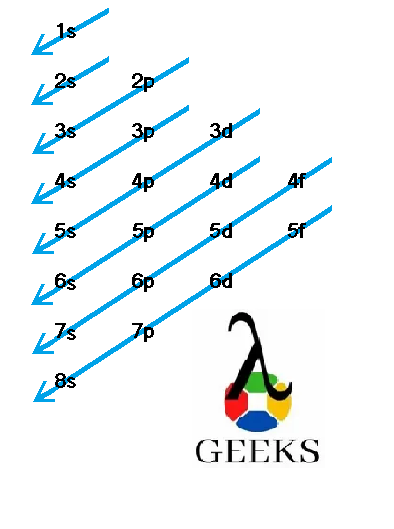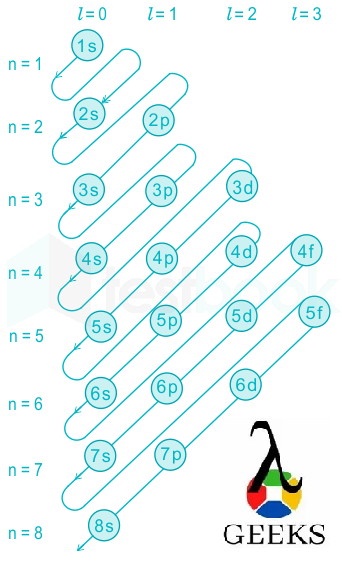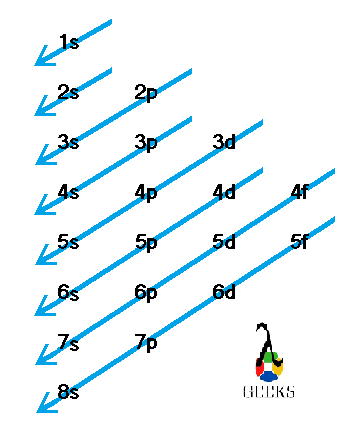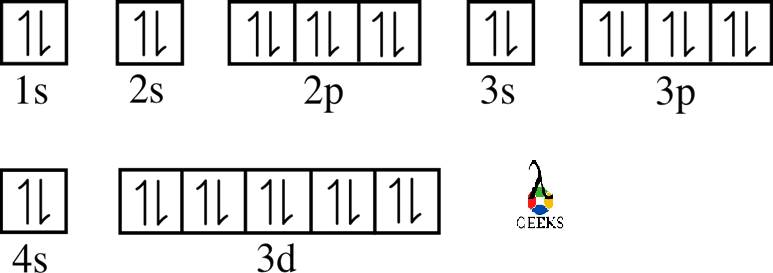Boric acid (H3BO3) and barium hydroxide (Ba(OH)2) are two chemical compounds that have different properties and applications. However, when combined, they form a new compound known as barium borate (HBr Ba(OH)2). This compound is of interest due to its unique characteristics and potential uses in various industries. In this article, we will explore the properties, synthesis, and applications of HBr Ba(OH)2, shedding light on its importance and potential impact in different fields. So, let’s dive in and uncover the fascinating world of HBr Ba(OH)2.
Key Takeaways
- HBR (Harvard Business Review) is a leading publication that offers insights and analysis on various business topics.
- Ba(OH)2 is the chemical formula for barium hydroxide, a compound used in various industries such as manufacturing, agriculture, and pharmaceuticals.
- Understanding and applying the concepts discussed in HBR articles can help businesses improve their strategies, decision-making, and overall performance.
- Barium hydroxide has several uses, including as a catalyst, in water treatment, and as a reagent in chemical reactions.
- Both HBR and Ba(OH)2 play important roles in their respective fields and can contribute to the success and growth of businesses and industries.
Reaction of HBr
Hydrobromic acid, with the chemical formula HBr, is a strong acid that is widely used in various industries. It is known for its reactive nature and ability to undergo different types of reactions. In this section, we will explore the properties and uses of HBr, as well as its molar mass and solubility in water.
Properties and uses of HBr
Hydrobromic acid is a colorless liquid with a pungent odor. It is highly corrosive and can cause severe burns upon contact with the skin. Therefore, it is essential to handle HBr with caution and wear appropriate protective equipment.
One of the primary uses of HBr is in the production of organic compounds. It is commonly used as a catalyst in various chemical reactions, such as the addition of HBr to alkenes to form alkyl bromides. Additionally, HBr is utilized in the synthesis of pharmaceuticals, dyes, and other important chemicals.
Apart from its role in organic synthesis, hydrobromic acid is also used in the manufacturing of inorganic bromides. These compounds find applications in industries such as photography, fire retardants, and water treatment.
Molar mass and solubility in water
The molar mass of HBr is approximately 80.91 grams per mole. This value is calculated by adding the atomic masses of hydrogen (H) and bromine (Br) present in the compound. The molar mass is an essential parameter in stoichiometry calculations and determining the amount of HBr needed for a specific reaction.
When it comes to solubility, hydrobromic acid is highly soluble in water. It readily dissolves in water to form a solution that is commonly referred to as hydrobromic acid. The solubility of HBr in water is influenced by factors such as temperature and concentration. At higher temperatures, the solubility of HBr increases, allowing for a more concentrated solution.
Reaction of Ba(OH)2
Ba(OH)2, also known as barium hydroxide, is a chemical compound with the formula Ba(OH)2. It is a white, crystalline solid that is highly soluble in water. Ba(OH)2 is commonly used in various industries due to its unique properties and versatile applications.
Properties and uses of Ba(OH)2
Ba(OH)2 possesses several notable properties that make it valuable in different fields. Here are some of its key characteristics:
-
Solubility: Ba(OH)2 is highly soluble in water, forming a strong alkaline solution. This property is essential for its various applications.
-
Basicity: As a strong base, Ba(OH)2 readily accepts protons and generates hydroxide ions (OH-) in water. This property is crucial for its role in neutralizing acids and regulating pH levels.
-
Hygroscopicity: Ba(OH)2 has hygroscopic properties, meaning it can absorb moisture from the air. This characteristic makes it useful in applications where water absorption is desired.
-
Heat of hydration: The dissolution of Ba(OH)2 in water is an exothermic process, releasing a significant amount of heat. This property is exploited in certain chemical reactions and industrial processes.
Given its unique properties, Ba(OH)2 finds applications in various industries:
-
Chemical industry: Ba(OH)2 is used as a reagent in numerous chemical reactions. It is commonly employed in the synthesis of other barium compounds, such as barium carbonate and barium sulfate.
-
Laboratory research: Ba(OH)2 is utilized in laboratories for its role in precipitation reactions and pH regulation. It is often employed as a source of hydroxide ions.
-
Manufacturing: Ba(OH)2 is used in the production of lubricating oils, paper, and textiles. It is also utilized in the manufacturing of certain ceramics and glass products.
-
Water treatment: Ba(OH)2 is employed in water treatment processes to remove impurities and adjust pH levels. Its ability to neutralize acids makes it effective in treating acidic wastewater.
Generation of hydroxide ions in water
When Ba(OH)2 is dissolved in water, it undergoes a reaction that generates hydroxide ions (OH-). This reaction can be represented by the following equation:
Ba(OH)2 + H2O → Ba2+ + 2OH-
In this reaction, Ba(OH)2 dissociates into barium ions (Ba2+) and hydroxide ions (OH-) in the aqueous solution. The dissociation of Ba(OH)2 is a result of the strong basicity of the compound.
The generation of hydroxide ions is an essential step in various chemical processes and applications. Hydroxide ions play a crucial role in neutralizing acids and maintaining the pH balance in solutions. They can react with acidic compounds to form water and a corresponding salt.
It is important to note that the reaction between Ba(OH)2 and water is highly exothermic, meaning it releases a significant amount of heat. This heat of hydration should be taken into consideration when handling Ba(OH)2 in laboratory or industrial settings.
Product of HBr and Ba(OH)2

When hydrobromic acid (HBr) and barium hydroxide (Ba(OH)2) are combined, they undergo a chemical reaction that results in the formation of barium bromide (BaBr2) and water (H2O). This reaction is known as a metathesis reaction, where the positive and negative ions of the reactants exchange partners to form new compounds.
Formation of Barium bromide (BaBr2) and water (H2O)
In this reaction, the hydrobromic acid (HBr) and barium hydroxide (Ba(OH)2) react to produce barium bromide (BaBr2) and water (H2O). The reaction can be represented by the following balanced equation:
HBr + Ba(OH)2 → BaBr2 + H2O
Let’s break down the reaction step by step:
- Hydrobromic acid (HBr) is a strong acid that dissociates in water to form hydrogen ions (H+) and bromide ions (Br-).
- Barium hydroxide (Ba(OH)2) is a strong base that dissociates in water to form barium ions (Ba2+) and hydroxide ions (OH-).
- In the reaction, the hydrogen ions (H+) from hydrobromic acid (HBr) combine with the hydroxide ions (OH-) from barium hydroxide (Ba(OH)2) to form water (H2O).
- The remaining ions, barium ions (Ba2+) and bromide ions (Br-), combine to form barium bromide (BaBr2).
Balanced equation: HBr + Ba(OH)2 → BaBr2 + H2O
The balanced equation for the reaction between hydrobromic acid (HBr) and barium hydroxide (Ba(OH)2) is:
HBr + Ba(OH)2 → BaBr2 + H2O
This equation shows that one molecule of hydrobromic acid reacts with one molecule of barium hydroxide to produce one molecule of barium bromide and one molecule of water.
It’s important to note that the equation is balanced, meaning that the number of atoms of each element is the same on both sides of the equation. This ensures that the law of conservation of mass is upheld.
Type of Reaction
Acid-base neutralization reaction
One of the most common types of reactions involving hydrobromic acid (HBr) and barium hydroxide (Ba(OH)2) is an acid-base neutralization reaction. In this type of reaction, an acid and a base react to form a salt and water. Let’s take a closer look at how this reaction occurs and the role of HBr as a strong acid and Ba(OH)2 as a strong base.
In an acid-base neutralization reaction, the H+ ion from the acid combines with the OH- ion from the base to form water (H2O). The remaining ions from the acid and base combine to form a salt. In the case of HBr and Ba(OH)2, the reaction can be represented by the following balanced equation:
HBr + Ba(OH)2 → BaBr2 + 2H2O
In this equation, HBr is the acid, Ba(OH)2 is the base, BaBr2 is the salt, and H2O is the water produced. The reaction is balanced, meaning that the number of atoms of each element is the same on both sides of the equation.
Role of HBr as a strong acid and Ba(OH)2 as a strong base
HBr is classified as a strong acid because it completely dissociates in water, releasing all of its H+ ions. This high degree of dissociation makes HBr a potent proton donor. On the other hand, Ba(OH)2 is considered a strong base because it fully dissociates in water, releasing all of its OH- ions. These OH- ions readily accept protons, making Ba(OH)2 a strong proton acceptor.
The strength of an acid or base is determined by its ability to donate or accept protons. Strong acids and bases have a high degree of dissociation, while weak acids and bases only partially dissociate. In the case of HBr and Ba(OH)2, their strong nature allows for a rapid and complete reaction, resulting in the formation of the salt and water.
It is worth noting that the reaction between HBr and Ba(OH)2 is an example of a metathesis reaction, also known as a double displacement reaction. In this type of reaction, the cations and anions of two compounds switch places, resulting in the formation of two new compounds. In the case of HBr and Ba(OH)2, the bromide ion (Br-) from HBr combines with the barium ion (Ba2+) from Ba(OH)2 to form the salt BaBr2.
Balancing the Equation
In chemistry, balancing chemical equations is a fundamental skill that allows us to understand the stoichiometry of a reaction. By ensuring that the number of atoms on both sides of the equation is equal, we can accurately represent the chemical changes taking place. Let’s explore the steps involved in balancing a chemical equation using the example of the reaction between hydrobromic acid (HBr) and barium hydroxide (Ba(OH)2).
Steps to balance the chemical equation
Balancing a chemical equation involves adjusting the coefficients in front of each compound or element to achieve an equal number of atoms on both sides of the equation. Here are the steps to balance the equation for the reaction between HBr and Ba(OH)2:
-
Identify the unbalanced equation: The unbalanced equation for the reaction is: HBr + Ba(OH)2 → BaBr2 + H2O.
-
Count the number of atoms: Count the number of atoms for each element on both sides of the equation. In this case, we have 1 hydrogen (H) atom on the left side and 2 hydrogen (H) atoms on the right side. Similarly, we have 1 bromine (Br) atom on the left side and 2 bromine (Br) atoms on the right side.
-
Balance the atoms: Start by balancing the atoms that appear in only one compound on each side of the equation. In this case, we can balance the hydrogen (H) atoms by placing a coefficient of 2 in front of HBr on the left side, resulting in 2HBr. Now we have 2 hydrogen (H) atoms on both sides.
-
Balance the remaining atoms: Next, balance the atoms that appear in multiple compounds. In this case, we have barium (Ba), oxygen (O), and bromine (Br) atoms to balance. By placing a coefficient of 2 in front of Ba(OH)2 on the right side, we get 2Ba(OH)2. Now we have 2 barium (Ba) atoms, 4 hydrogen (H) atoms, and 2 oxygen (O) atoms on the right side.
-
Check and adjust: Finally, check if all the atoms are balanced. In this case, we have 2 barium (Ba) atoms, 4 hydrogen (H) atoms, 2 oxygen (O) atoms, and 2 bromine (Br) atoms on both sides of the equation. The equation is now balanced.
Balanced equation: 2HBr + Ba(OH)2 → BaBr2 + 2H2O
After following the steps outlined above, we arrive at the balanced equation for the reaction between hydrobromic acid (HBr) and barium hydroxide (Ba(OH)2): 2HBr + Ba(OH)2 → BaBr2 + 2H2O.
By balancing the equation, we ensure that the number of atoms of each element is conserved during the reaction. This balanced equation accurately represents the reactants and products involved in the reaction and allows us to calculate the quantities of substances involved using stoichiometry.
In the balanced equation, we can see that 2 molecules of hydrobromic acid (HBr) react with 1 molecule of barium hydroxide (Ba(OH)2) to produce 1 molecule of barium bromide (BaBr2) and 2 molecules of water (H2O). This balanced equation provides a clear understanding of the reactants and products involved in the reaction.
Balancing chemical equations is a crucial skill in chemistry, as it allows us to predict the outcome of reactions, calculate reaction yields, and understand the underlying principles of chemical reactions. By following the steps outlined above, you can confidently balance any chemical equation and gain a deeper understanding of the chemical processes at play.
Titration of HBr and Ba(OH)2
Procedure and Apparatus for Titration
When it comes to determining the concentration of a solution, titration is a widely used technique in chemistry. In the case of hydrobromic acid (HBr) and barium hydroxide (Ba(OH)2), titration can be employed to find the exact amount of one substance needed to react with the other. This process involves carefully measuring the volumes of the reactants and using an indicator to determine the endpoint of the reaction. Let’s take a closer look at the procedure and apparatus used for titration.
To begin with, the necessary apparatus for this titration includes a burette, a conical flask, a pipette, and a suitable indicator. The burette is used to deliver the solution of one reactant (either HBr or Ba(OH)2) into the conical flask. The pipette is used to measure a precise volume of the other reactant and transfer it to the flask. The indicator is added to the flask to help visualize the endpoint of the reaction.
The procedure for titration involves the following steps:
-
Prepare the solutions: Start by preparing the solutions of HBr and Ba(OH)2 with known concentrations. These solutions should be accurately measured and labeled.
-
Measure the volume of one reactant: Use the pipette to measure a specific volume of one reactant (either HBr or Ba(OH)2) and transfer it to the conical flask.
-
Add the indicator: Add a few drops of the indicator to the flask. In the case of HBr and Ba(OH)2 titration, phenolphthalein is commonly used as an indicator. It changes color at the endpoint of the reaction, indicating that the reaction is complete.
-
Titrate with the other reactant: Slowly add the solution of the other reactant (HBr or Ba(OH)2) from the burette into the flask while continuously swirling the flask. The indicator will change color as the reaction progresses.
-
Observe the endpoint: Continue adding the solution from the burette until the indicator reaches its endpoint color. This color change indicates that the reaction between HBr and Ba(OH)2 is complete.
-
Record the volume: Note the volume of the solution from the burette that was required to reach the endpoint. This volume can be used to calculate the concentration of the reactants.
It is important to note that the reaction between HBr and Ba(OH)2 is a metathesis reaction, resulting in the formation of water (H2O) and barium bromide (BaBr2). The balanced chemical equation for this reaction is:
HBr + Ba(OH)2 → H2O + BaBr2
By carefully measuring the volumes of the reactants and using an indicator to determine the endpoint, the concentration of HBr or Ba(OH)2 can be accurately determined through titration.
In the next section, we will explore the use of phenolphthalein as an indicator in the titration of HBr and Ba(OH)2.
Use of Phenolphthalein as an Indicator
Phenolphthalein is a commonly used indicator in acid-base titrations, including the titration of HBr and Ba(OH)2. This colorless compound undergoes a color change in the presence of an acidic or basic solution, making it an ideal indicator for determining the endpoint of the reaction.
In the case of HBr and Ba(OH)2 titration, phenolphthalein is added to the conical flask containing the reactants. Initially, the solution remains colorless as the reaction has not yet reached its endpoint. However, as the reaction progresses and the pH of the solution changes, phenolphthalein undergoes a color transition.
Phenolphthalein is colorless in acidic solutions and turns pink or magenta in basic solutions. Therefore, as the solution in the flask approaches neutrality, the phenolphthalein indicator will change from colorless to pink, indicating that the reaction is nearing completion.
The color change of phenolphthalein serves as a visual cue for the endpoint of the titration. At this point, the volume of the solution from the burette that was required to reach the endpoint can be recorded. This volume, along with the known concentration of the reactants, can be used to calculate the concentration of HBr or Ba(OH)2.
Phenolphthalein is a reliable indicator for the titration of HBr and Ba(OH)2 due to its distinct color change at the endpoint of the reaction. Its use allows for accurate determination of the concentration of the reactants and ensures precise results in the titration process.
Net Ionic Equation
In chemical reactions, it is often useful to represent the reaction in terms of the ions involved. This is where the concept of a net ionic equation comes into play. A net ionic equation is a simplified representation of a chemical reaction that focuses on the ions that actually participate in the reaction.
Derivation of the Net Ionic Equation
To derive the net ionic equation, we first need to understand the reaction between hydrobromic acid (HBr) and barium hydroxide (Ba(OH)2). When these two compounds react, they undergo a metathesis reaction, also known as a double displacement reaction.
In the reaction between HBr and Ba(OH)2, the hydrogen ion (H+) from HBr combines with the hydroxide ion (OH-) from Ba(OH)2 to form water (H2O). The remaining ions, bromide (Br-) from HBr and barium (Ba2+) from Ba(OH)2, do not react further and remain as spectator ions.
Net Ionic Equation: 2OH- + 2H+ → 2H2O
The net ionic equation for the reaction between HBr and Ba(OH)2 can be written as follows:
2OH- + 2H+ → 2H2O
In this equation, the spectator ions (Br- and Ba2+) are not included because they do not participate in the reaction. The equation only focuses on the ions that undergo a chemical change.
By simplifying the equation to include only the ions involved in the reaction, we can better understand the fundamental chemical process taking place. This allows us to analyze the reaction and its properties more effectively.
It is important to note that the net ionic equation represents the overall reaction, but it does not provide information about the stoichiometry or the specific amounts of reactants and products involved. To determine the stoichiometry, one must balance the equation by adjusting the coefficients of the reactants and products.
Conjugate Pairs
In chemistry, conjugate pairs play a crucial role in understanding the behavior of acids and bases. A conjugate pair consists of an acid and its corresponding base, or a base and its corresponding acid. Let’s explore two conjugate pairs: the conjugate base of HBr and the conjugate acid of Ba(OH)2.
Conjugate base of HBr: Br-
HBr, or hydrobromic acid, is a strong acid commonly used in various chemical reactions. When HBr donates a proton (H+) to a water molecule, it forms its conjugate base, bromide ion (Br-). This reaction can be represented by the following equation:
HBr + H2O ⇌ Br- + H3O+
Here, the HBr molecule acts as an acid by donating a proton to water, which acts as a base. As a result, the bromide ion (Br-) is formed, along with the hydronium ion (H3O+). The bromide ion is the conjugate base of HBr because it is formed when HBr loses a proton.
Conjugate acid of Ba(OH)2: Ba2+
Ba(OH)2, or barium hydroxide, is a strong base commonly used in various chemical reactions. When Ba(OH)2 accepts a proton (H+) from a water molecule, it forms its conjugate acid, barium ion (Ba2+). This reaction can be represented by the following equation:
Ba(OH)2 + H2O ⇌ Ba2+ + 2OH-
Here, the Ba(OH)2 molecule acts as a base by accepting a proton from water, which acts as an acid. As a result, the barium ion (Ba2+) is formed, along with two hydroxide ions (OH-). The barium ion is the conjugate acid of Ba(OH)2 because it is formed when Ba(OH)2 gains a proton.
Understanding conjugate pairs is essential in predicting the direction of acid-base reactions and determining the relative strengths of acids and bases. In a reaction, the stronger acid will donate a proton to the stronger base, forming their respective conjugate pairs. This concept is fundamental in the study of acid-base chemistry.
Intermolecular Forces
Intermolecular forces play a crucial role in determining the physical and chemical properties of substances. These forces are the attractive interactions that occur between molecules. In the case of hydrobromic acid (HBr) and barium hydroxide (Ba(OH)2), two important intermolecular forces come into play: dipole-dipole interactions in HBr and the ionic nature of Ba(OH)2.
Dipole-dipole interactions in HBr
Hydrobromic acid (HBr) is a strong acid that consists of hydrogen (H) and bromine (Br) atoms. The H-Br bond is polar, meaning that the electron density is unevenly distributed between the two atoms. The hydrogen atom has a partial positive charge (δ+) due to its lower electronegativity, while the bromine atom has a partial negative charge (δ-) due to its higher electronegativity.
These partial charges give rise to dipole-dipole interactions in HBr. Dipole-dipole interactions occur when the positive end of one molecule attracts the negative end of another molecule. In the case of HBr, the positive end of the hydrogen atom is attracted to the negative end of the bromine atom in a neighboring molecule.
These dipole-dipole interactions contribute to the physical properties of HBr. For example, HBr has a higher boiling point compared to nonpolar molecules of similar size because the dipole-dipole interactions require more energy to break the intermolecular bonds.
Ionic nature of Ba(OH)2
Barium hydroxide (Ba(OH)2) is an ionic compound that consists of barium (Ba) cations and hydroxide (OH) anions. The Ba cations have a positive charge, while the OH anions have a negative charge. The ionic nature of Ba(OH)2 arises from the electrostatic attraction between the oppositely charged ions.
In a solid state, Ba(OH)2 forms a crystal lattice structure where the Ba cations and OH anions are held together by strong ionic bonds. This lattice structure gives Ba(OH)2 its solid and crystalline nature.
When Ba(OH)2 is dissolved in water, the ionic bonds between the Ba cations and OH anions are broken, and the compound dissociates into its constituent ions. This dissociation process results in the formation of a solution that conducts electricity, as the ions are free to move and carry electric charge.
The ionic nature of Ba(OH)2 also contributes to its reactivity. It can undergo various chemical reactions, such as neutralization reactions with acids, where the Ba cations react with the H+ ions from the acid to form water and a salt.
Reaction Enthalpy
The reaction enthalpy of a chemical reaction refers to the amount of heat energy released or absorbed during the reaction. It provides valuable insight into the thermodynamics of the reaction and helps us understand the energy changes that occur during the process.
Exothermic Nature of the Reaction
When we talk about the exothermic nature of a reaction, we are referring to a reaction that releases heat energy into its surroundings. In the case of the reaction between hydrobromic acid (HBr) and barium hydroxide (Ba(OH)2), it is an exothermic reaction.
During this reaction, the hydrobromic acid and barium hydroxide react to form water (H2O) and barium bromide (BaBr2). This reaction is classified as an exothermic reaction because it releases heat energy as a byproduct. The heat energy is transferred from the reactants to the surroundings, resulting in an increase in temperature.
Enthalpy Value: -118 kJ/mol
The enthalpy value of a reaction is a measure of the heat energy change that occurs during the reaction. It is usually given in kilojoules per mole (kJ/mol) and provides information about the magnitude of the energy change.
For the reaction between hydrobromic acid and barium hydroxide, the enthalpy value is -118 kJ/mol. The negative sign indicates that the reaction is exothermic, meaning that heat energy is released during the reaction. The magnitude of -118 kJ/mol indicates that a significant amount of heat energy is released per mole of the reaction.
It is important to note that the enthalpy value is specific to the reaction and can vary depending on the reaction conditions, such as temperature and pressure. The enthalpy value provides valuable information about the energy changes that occur during the reaction and helps us understand the thermodynamics of the process.
Buffer Solution
A buffer solution is a special type of solution that helps maintain a stable pH level even when small amounts of acid or base are added to it. It consists of a weak acid and its conjugate base, or a weak base and its conjugate acid. Buffer solutions are widely used in various fields, including chemistry, biology, and medicine, due to their ability to resist changes in pH.
Possibility of forming a buffer solution
To form a buffer solution, it is essential to have a weak acid or base and its conjugate partner. In the case of HBr (hydrobromic acid) and Ba(OH)2 (barium hydroxide), both are strong acids and bases, respectively. Therefore, they cannot directly form a buffer solution. However, by using the concept of neutralization, we can create a buffer solution using the products of their reaction.
When hydrobromic acid (HBr) reacts with barium hydroxide (Ba(OH)2), it forms barium bromide (BaBr2) and water (H2O). The equation for this reaction is:
HBr + Ba(OH)2 → BaBr2 + H2O
In this reaction, the hydroxide ion (OH-) from the base reacts with the hydrogen ion (H+) from the acid to form water. The remaining ions, bromide (Br-) and barium (Ba2+), can be used to create a buffer solution.
Resistance to pH changes
Buffer solutions are known for their ability to resist changes in pH. This property is due to the presence of a weak acid and its conjugate base or a weak base and its conjugate acid. When an acid or base is added to a buffer solution, the buffer components react with the added ions, preventing a significant change in pH.
In the case of the buffer solution formed from the reaction between HBr and Ba(OH)2, the bromide ion (Br-) acts as the conjugate base of the weak acid HBr, while the barium ion (Ba2+) acts as the weak base. These ions can accept or donate protons to maintain the pH of the solution.
For example, if a small amount of acid is added to the buffer solution, the bromide ion can react with the added H+ ions, forming more HBr. This reaction helps to neutralize the additional acid, preventing a drastic decrease in pH. Similarly, if a base is added, the barium ion can react with the OH- ions, forming more Ba(OH)2, which helps neutralize the added base and prevents a significant increase in pH.
Completeness of the Reaction
When studying chemical reactions, it is important to assess the completeness of the reaction. This involves examining whether the reactants have been fully converted into products and understanding the specific compounds that are formed. In the case of the reaction between hydrobromic acid (HBr) and barium hydroxide (Ba(OH)2), let’s explore the completeness of the reaction and the formation of BaBr2 and H2O.
Complete Conversion of Reactants to Products
In a balanced chemical equation, the reactants are written on the left side, and the products are written on the right side. The equation for the reaction between HBr and Ba(OH)2 can be represented as follows:
HBr + Ba(OH)2 → BaBr2 + H2O
To determine the completeness of the reaction, we need to ensure that all the reactants have been fully converted into products. In this case, we want to confirm that all the hydrobromic acid and barium hydroxide have reacted to form barium bromide and water.
Formation of BaBr2 and H2O
The reaction between HBr and Ba(OH)2 results in the formation of barium bromide (BaBr2) and water (H2O). Barium bromide is a white crystalline solid, while water is a colorless liquid. The chemical formula for barium bromide is BaBr2, indicating that it consists of one barium atom (Ba) and two bromide atoms (Br).
BaBr2 is soluble in water, meaning it dissolves in water to form a solution. This solubility property allows barium bromide to dissociate into its constituent ions, barium (Ba2+) and bromide (Br-), in an aqueous solution. Water, on the other hand, is a polar molecule that can form hydrogen bonds between its molecules.
The formation of BaBr2 and H2O in the reaction between HBr and Ba(OH)2 is a result of a metathesis reaction, also known as a double displacement reaction. In this type of reaction, the cations and anions of the reactants exchange places to form new compounds.
To summarize, the reaction between hydrobromic acid (HBr) and barium hydroxide (Ba(OH)2) is complete when all the reactants have been fully converted into products. In this case, the reaction yields barium bromide (BaBr2) and water (H2O). The formation of BaBr2 and H2O occurs through a metathesis reaction, where the cations and anions of the reactants exchange places.
Reversibility of the Reaction
In chemistry, the reversibility of a reaction refers to the ability of the reaction to proceed in both the forward and backward directions. Some reactions are irreversible, meaning they only proceed in one direction, while others are reversible, meaning they can proceed in both directions. In the case of the reaction between hydrobromic acid (HBr) and barium hydroxide (Ba(OH)2), the reversibility of the reaction depends on certain factors.
Irreversible reaction with no backward reaction
In some cases, a reaction may be irreversible with no backward reaction. This means that once the reaction has occurred, it cannot be reversed to regenerate the original reactants. In the context of the reaction between HBr and Ba(OH)2, this is not the case. The reaction between HBr and Ba(OH)2 is a metathesis reaction, which involves the exchange of ions between the reactants to form new compounds. The reaction can be represented by the following equation:
HBr + Ba(OH)2 → BaBr2 + 2H2O
As we can see from the equation, the reactants HBr and Ba(OH)2 combine to form the products BaBr2 and water (H2O). This reaction is reversible, meaning that it can proceed in both the forward and backward directions. However, the extent to which the reaction proceeds in either direction depends on certain factors.
Products do not convert back to reactants
In a reversible reaction, the products can convert back to the reactants under certain conditions. However, in the case of the reaction between HBr and Ba(OH)2, the products do not readily convert back to the reactants. This is due to the nature of the products formed in the reaction.
When HBr and Ba(OH)2 react, they form BaBr2 and water (H2O) as products. BaBr2 is a solid compound that does not readily dissociate back into its constituent ions. Similarly, water (H2O) is a stable compound that does not easily decompose back into HBr and Ba(OH)2. Therefore, the products formed in the reaction do not readily convert back to the reactants.
Displacement Reaction
A displacement reaction is a type of chemical reaction where one element is replaced by another element in a compound. This reaction occurs when a more reactive element displaces a less reactive element from its compound. In the case of hbr baoh2, the displacement reaction involves hydrobromic acid (HBr) and barium hydroxide (Ba(OH)2).
Double-displacement (metathesis) reaction
One type of displacement reaction is a double-displacement, also known as a metathesis reaction. In this reaction, the anions and cations of two compounds switch places to form different compounds. In the case of hbr baoh2, the hydroxide ion (OH-) from barium hydroxide combines with the hydrogen ion (H+) from hydrobromic acid to form water (H2O). The remaining ions, barium (Ba2+) and bromide (Br-), combine to form barium bromide (BaBr2).
The balanced chemical equation for this reaction is:
Ba(OH)2 + 2HBr -> 2H2O + BaBr2
This reaction takes place in a flask or container, where the reactants are mixed together. As the reaction proceeds, the colorless liquid of hydrobromic acid reacts with the white solid of barium hydroxide to produce water and a white precipitate of barium bromide. The reaction is exothermic, meaning it releases heat.
Switching of anions and cations to form different compounds
In a displacement reaction, the anions and cations of the reactants switch places to form different compounds. In the case of hbr baoh2, the hydroxide ion (OH-) from barium hydroxide combines with the hydrogen ion (H+) from hydrobromic acid to form water (H2O). The remaining ions, barium (Ba2+) and bromide (Br-), combine to form barium bromide (BaBr2).
This switching of anions and cations is possible due to the difference in reactivity between the elements involved. In this reaction, barium hydroxide is a strong base, while hydrobromic acid is a strong acid. The strong base and acid react to form water, which is a neutral compound. The remaining ions combine to form a new compound.
It is important to note that displacement reactions can only occur if the replacing element is more reactive than the element being displaced. In the case of hbr baoh2, barium hydroxide is more reactive than hydrobromic acid, allowing the displacement reaction to occur.
Displacement reactions have various applications in chemistry, including the synthesis of new compounds, the extraction of metals from their ores, and the production of salts. Understanding displacement reactions is crucial in predicting the outcome of chemical reactions and designing new compounds with specific properties.
Frequently Asked Questions
What does HBr do in a reaction?
HBr, also known as hydrobromic acid, is a strong acid that dissociates in water to release hydrogen ions (H+) and bromide ions (Br-). It can act as a proton donor in reactions, making it useful in various chemical processes.
What salt would Ba(OH)2 and HBr produce?
When barium hydroxide (Ba(OH)2) reacts with hydrobromic acid (HBr), it forms barium bromide (BaBr2) and water (H2O). This reaction can be represented by the chemical equation: Ba(OH)2 + 2HBr → BaBr2 + 2H2O.
How to balance HBr + Al(OH)3 = H2O + AlBr3?
To balance the equation HBr + Al(OH)3 = H2O + AlBr3, you need to ensure that the number of atoms of each element is the same on both sides of the equation. The balanced equation is: 3HBr + Al(OH)3 → 3H2O + AlBr3.
What does HBr do to an alkene?
HBr can react with an alkene in a process called electrophilic addition. The hydrogen atom from HBr adds to one carbon of the alkene, while the bromine atom adds to the other carbon, resulting in the formation of a bromoalkane.
Is Ba(OH)2 a strong acid?
No, Ba(OH)2 is not a strong acid. It is a strong base. Ba(OH)2, also known as barium hydroxide, dissociates in water to release hydroxide ions (OH-). Strong acids, on the other hand, dissociate completely into hydrogen ions (H+) in water.
What is Ba(OH)2?
Ba(OH)2 is the chemical formula for barium hydroxide. It is a strong base that is commonly used in various industries, including chemical manufacturing, water treatment, and laboratory applications.
What is the net ionic equation for HBr + Ca(OH)2?
The net ionic equation for the reaction between hydrobromic acid (HBr) and calcium hydroxide (Ca(OH)2) is: 2H+ + 2Br- + Ca2+ + 2OH- → 2H2O + CaBr2.
How would you obtain bromine from HBr?
To obtain bromine from hydrobromic acid (HBr), you can carry out a redox reaction with a strong oxidizing agent, such as chlorine gas (Cl2) or potassium permanganate (KMnO4). The bromine gas (Br2) produced can then be collected and purified.
What are the properties and uses of HBr?
Hydrobromic acid (HBr) is a colorless liquid with a pungent odor. It is highly corrosive and can cause severe burns. HBr is used in various applications, including chemical synthesis, pharmaceutical manufacturing, and as a reagent in laboratory experiments.
What are the safety precautions for handling HBr?
When handling hydrobromic acid (HBr), it is important to wear appropriate personal protective equipment, such as gloves, goggles, and a lab coat, to prevent contact with the skin, eyes, and clothing. HBr should be used in a well-ventilated area to avoid inhalation of its fumes.
